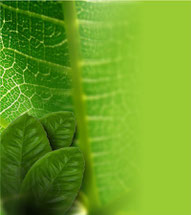Theme III.a: Micromorphological characteristics of plant drugs (vegetal drugs, herbal drugs)

Plant cells
Plant Cells Characteristics
1. Plant cells have a rigid cellulosic cell wall, avoiding shape and position changes, which differs them from animal cells.
2. Plant cells contain plastids, structures which synthesize and store food. The most common are the chloroplasts.
3. Almost all plant cells have vacuoles which have the function to transport and store nutrients, water and waste products.
Cell Structure and Function
Cell Wall
The huge variety of plant species is related to the diversity of their cells, although there are similarities between them due to the common origin of the
botanical spices.
Each plant cells is at least partly self-sufficient, and is isolated from its neighbors by the plasma or cell membrane and a cell wall. The membrane and cell wall ensure the development of cells functions and at the same time, a cytoplasmic connections called plasmodesmata maintain communication with adjacent cells. The cell wall is the difference between plant and animal cells and holds several important functions:
- Protects the contents of the cell
- Limits their size;
- Is involved in the transport, absorption and secretion of different substances.
The main component of the plant cells wall is cellulose (polymer consisting of glucose molecules). Molecules bind to cellulose fibrils, which
form the structural frame of the wall. Also these cell walls are composed of lignin, which increase the stiffness, and by waxes that reduce water loss.
Many plant cell form a primary cell wall while the cell grows, and a secondary one formed inside the primary wall at the end of the growth. Both walls, primary and secondary are
crossed by transport roads of substance called plasmodesmata.
Ergastic cell content
Protoplast
Is in plant cells the cell wall enclosing the live cell content, called protoplast. This content is wrapped in a single cell membrane of three layers. The protoplast consists in cytoplasm, which contains organelles and vacuoles wrapped in membrane and nucleus: the hereditary unit cell.
Vacuoles
Vacuoles are cavities bounded by a membrane, cell sap filled, mostly formed by water with sugars, salts and other compounds in solution.
The plastids
The plastids are organelles (specialized cellular structures like organs) limited by two membranes.
There are three major types of plastids: chloroplasts contain chlorophyll and carotenoid pigments, in them is carried out photosynthesis, the process of capture and storage of solar energy into chemical energy accumulated in bonding of carbon compounds.
The leucoplasts lack of pigment and are involved in the synthesis of starch, oils and proteins.
The chromoplasts synthesize carotenoids.
Mitochondria
While plastids involved in different ways in storing energy, mitochondria (other cell organelles) are the sites of respiration. This process involves chemical energy transfer from the carbon-containing compounds or adenosine triphosphate ATP, the main source of energy for cells. The transfer takes place in three stages: glycolysis (the production of acid from carbohydrates), Krebs cycle and electron transfer.
Because plastids, mitochondria are wrapped in two membranes,
the internal highly folded, these cristae or
inner folds are the surfaces on which respiratory reactions
occur.
There are two other important cellular components: Ribosomes (where amino acids are joining to form the proteins), and the Golgi apparatus, which is involved in the secretion of cellular material.
Furthermore, in almost all the cytoplasm runs a membrane complex called endoplasmic reticulum, which seems to act as a communication system in which circulates various types of substances from one part of the cell to the other.
Ribosomes are usually connected to the endoplasmic reticulum, which extends into the double membrane surrounding the cell nucleus. The core determines which proteins are going to be produced, and thus controls cell functions. It also maintains and transmits genetic information to new generation cell through cell division.

 Pharmacognosy´s topics - Medicinal plants
Pharmacognosy´s topics - Medicinal plants


Write a comment